Writer Joseph J. Airdo
One of the first places Jennifer McCabe visits when exploring any new place is its art museum.
“I like to see what that community is excited about,” says McCabe, explaining that art museums are reflections of a community’s cultural identity and therefore among a city’s most essential resources.
Since 1999, Scottsdale Museum of Contemporary Art has served as that reflection for the city of Scottsdale, exploring leading contemporary art, architecture and design through each of its five galleries that showcase changing exhibitions and works that feature a global focus.
This month, the museum will kick off a yearlong anniversary celebration, commemorating its 25-year history of bringing communities together under the shared philosophy that art has the power to engage our imaginations, challenge our perceptions and inspire change.
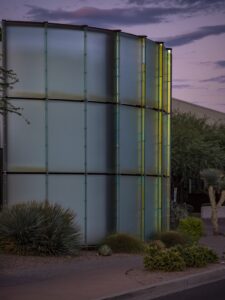


United Artists
“It took a lot of years and a tremendous amount of community effort to open our museum,” says McCabe, who serves as SMoCA’s director and chief curator. “Prior to its existence, exhibitions were staged in the atrium of Scottsdale Center for the Arts, but a number of people in the community really wanted to see a standalone museum in Scottsdale.”
Among the most notable was Frank Jacobson — president of what was at that time called the Scottsdale Cultural Council, which has since morphed into Scottsdale Arts.
“Frank and Sam Campana, Scottsdale’s first female mayor, were both huge advocates of the museum,” says McCabe, noting that the project’s primary donors included late businessman and philanthropist Gerard L. Cafesjian and late philanthropist couple Ellie and Michael Ziegler.
With regard to location, the museum’s founders sought a site in the heart of the city, in close proximity to Scottsdale Center for the Performing Arts and Scottsdale Civic Center.
“The building itself was originally a [five-plex United Artists] movie theater,” McCabe says. “The museum’s founders hired award-winning architect Will Bruder to redevelop its space. Will and a small group of people traveled to a number of museums around the country and thoughtfully considered what made a good contemporary art museum.”
Unlike some other types of museums, contemporary art museums often benefit from being a bit more adventurous in their designs.
“We are not just talking about hanging paintings on walls,” McCabe explains. “They looked at what made great backgrounds for artworks and decided on concrete floors and high ceilings. They also incorporated a loading dock in order to get large-scale works into the museum.”
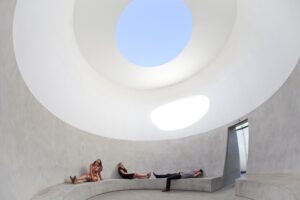


Early Exhibitions
Having been first conceived in 1988, SMoCA officially opened its doors 11 years later, in February 1999.
One of its most notable early exhibitions, “Infinite Light,” debuted in 2001 and featured five of visionary artist James Turrell’s room-sized light works, where forms seemed to float in the air and spaces gradually filled with light. It also featured Turrell’s perceptually based gallery installation, “GasWorks,” which immersed viewers within a sphere of light.
“To this day, I still have people tell me stories about that exhibition,” McCabe says.
It was at that time that SMoCA’s permanent Turrell-conceived elliptical Skyspace also made its public debut. Named after the museum’s founding director, Robert Knight, “Knight Rise” frames the sky as pure color to show us the changing light of the sky and, according to the artist, “alter what we see with our own eyes.”
“Based in northern Arizona, James Turrell is one of the most internationally recognized artists of our time,” McCabe says. “So I think it is a really special point for both our museum and our city that we have this Skyspace, which is a reflection of both our local artist community and internationally known artists. I love the synergy that is demonstrated in that.”
A more recent exhibition that is among the most noteworthy was “Ocean of Light: Submergence” by the U.K.-based artist collective known as Squidsoup. Debuting in 2017, the installation used light-based data visualization to create an augmented reality environment that challenges the spatial and the sculptural and provides a context for understanding the true immensity of data.
“It was a very photogenic exhibition of lights that responded to movement,” McCabe says. “It was really beautiful and even kind of magical. And because it was so photogenic, it went viral and ended up quadrupling our attendance for that year. It was at that moment that we realized the power of art and technology in the community. So, ever since then, we have kept technology as part of our repertoire.”
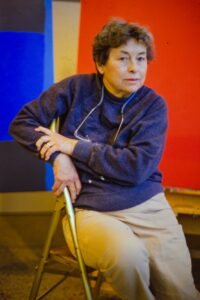


Evolution of Expansion
Among the exhibitions that launch SMoCA’s 25th anniversary this month is “Dorothy Fratt: Color Mirage,” which spans more than five decades of the late artist’s oeuvre, presenting a selection of foundational early works and ephemera alongside numerous paintings that exemplify her vibrant and distinct style of abstraction.
“‘Dorothy Fratt: Color Mirage’ is the most comprehensive retrospective to date of an artist who has been incredibly important to the greater Phoenix community but largely unrecognized in the art world,” says McCabe, noting that it marks the first-ever U.S. museum exhibition on the prolific, yet underrecognized, American painter.
“There is no better moment to highlight Fratt’s work as a way to contribute to the ongoing revision of the art historical canon. Showcasing the work of an artist who operated outside of the art world center creates a richer understanding of what these oversights have left out.
“Over the last 25 years, the museum — along with the field of art in general — has been evolving to be more diverse, inclusive and equitable. You can see over time that more female artists, Indigenous artists and artists of color are being incorporated into these programs. That is something that is happening across the field.”
Another exhibition that will debut this month is “Oleaje,” a series of new large-scale installation works by San Francisco-based, Bolivian-born artist Carolina Aranibar-Fernández.
“Coming from South America, Carolina has always been interested in the environmental impacts of the global trade industry,” McCabe says. “Much of her work involves mapping and cartography, but she uses a lot of handmade sewing techniques and materials that you might find in the mining field — such as copper.”
Part of Project Space, a SMoCA initiative that supports emerging and established artists in expanding their practice, “Oleaje” is assistant curator Keshia Turley’s first exhibition, demonstrating that the museum is also keenly interested in cultivating the curators of tomorrow.
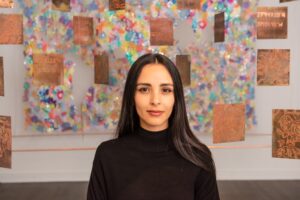


Toasting Tomorrow
Although an official 25th anniversary event featuring live music, food and refreshments is set for Friday, Feb. 9, McCabe says that the celebration will continue all year in the form of more exciting exhibitions as well as the museum’s regular schedule of artist talks, workshops, sound baths and more.
“We are also planning a summer party and we have even more special exhibitions that will be opening this fall,” she notes. “Museums, ideally, provide a space for people to connect. Especially during times when we feel like we are on separate sides of humanity, art museums have a powerful way of helping us see how we have more things in common than we have differences.
“I also love that art museums are places where you can slow down, look, think, take it all in and talk — or not talk. But you can always talk to SMoCA’s staff. We all have opinions about the artwork and things in our world. I hope that our museum continues to be an open space where people from all backgrounds can come, enjoy and be inspired.”
SMoCA’s 25th Birthday Celebration
Friday, Feb. 9 // 7–9 p.m. // Scottsdale Museum of Contemporary Art // 7374 E. Second St., Scottsdale // Free // smoca.org

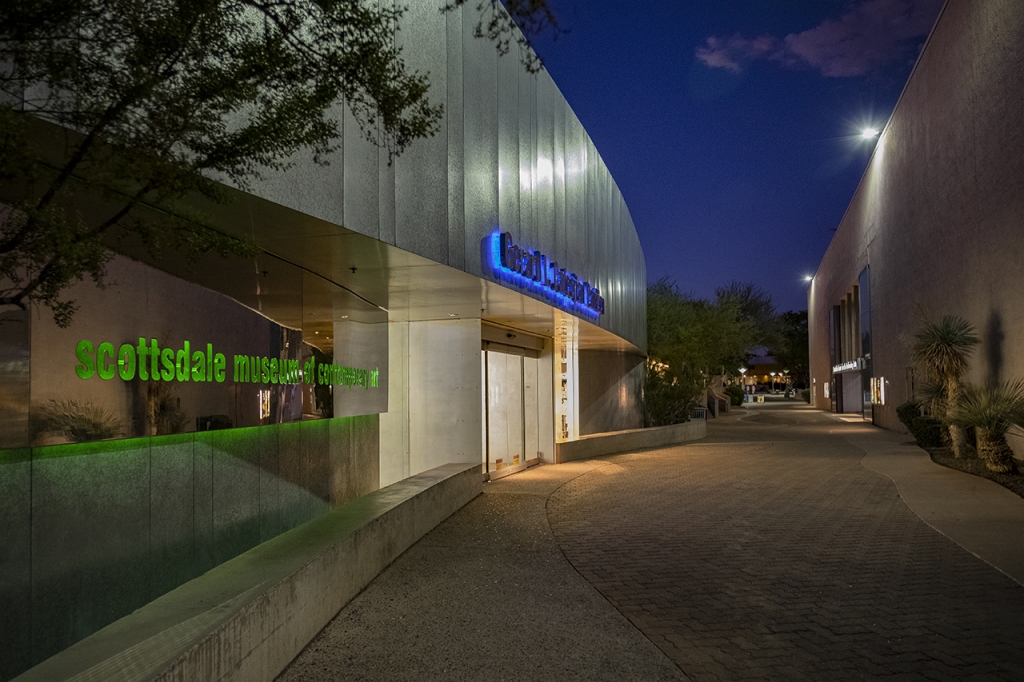





Comments by Admin